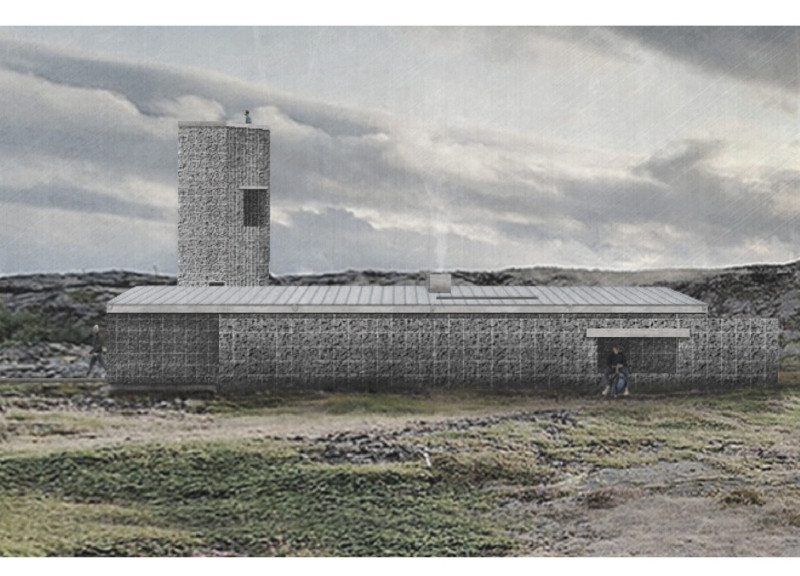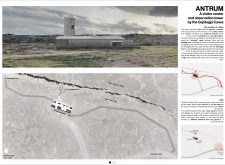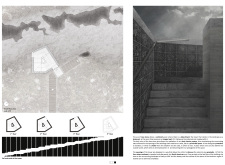5 key facts about this project
The project around Kvennagjà Cave and Karlagjà Cave is located in Northern Iceland, where the landscape is both rugged and beautiful. It consists of a visitor center designed as a pavilion and a striking observation tower. Together, these structures enhance the experience for visitors exploring the natural environment. The design focuses on guiding people through the site while respecting both the caves and the surrounding area.
Design Intent
The pavilion serves as the main space for visitors, designed in a long, horizontal shape that runs parallel to the road. This position cleverly hides the entrance to the Karlagjà Cave, creating an air of mystery as visitors approach. The layout encourages movement between inside and outside, inspired by the natural formations found in the area. It balances functionality with a design that harmonizes with the landscape.
Sculptural Element
The observation tower stands out within the design, acting as both a landmark and a place to view the landscape. Its shape is designed in such a way that it attracts visitors towards the entrance of the cave. Carefully placed openings allow for sweeping views, initially hinting at the nearby Euro-Asian continent, and later revealing a full 360-degree panorama of the diverse Icelandic environment. This aspect invites visitors to engage with the landscape.
Materiality and Sustainability
Local volcanic stone is used as the primary material for both the pavilion and the tower. The structure employs steel gabions filled with stone, creating a strong and reversible design that fits well with the geological features of the site. This choice enhances both the look and feel of the buildings while emphasizing the connection to the natural surroundings. Furthermore, the design pays attention to sustainability. The pavilion is insulated to retain heat, while the observation tower remains open to climate variations, taking advantage of natural energy.
Interior Experience
Inside the pavilion, spaces are designed to be dark and sheltered, reminiscent of natural caves. This offers visitors protection from the weather while encouraging them to interact with their surroundings. Carefully positioned openings frame outdoor views, creating a strong connection between what is inside and outside. The layout ensures that visitors feel a bond with the landscape, enriching their appreciation of the site’s geological and cultural significance.
An elevated path guides visitors through the area, contributing to the overall experience while preventing disruption to the natural terrain. This pathway leads towards both the pavilion and the caves, integrating naturally with the existing landscape and inviting exploration of the unique geological features that surround it.





















































